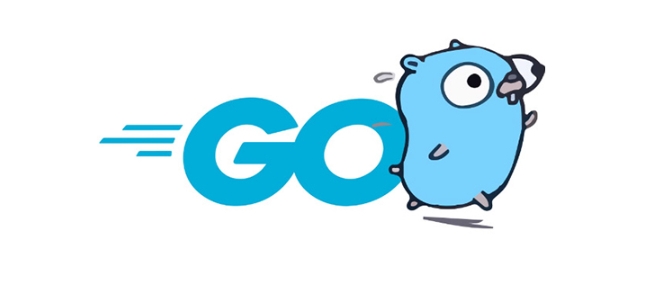Go's slog library enables structured logging to be simple and efficient. 1. slog is a lightweight structured log package officially launched by Go. It does not require third-party dependencies and supports JSON and text format output; 2. Use slog.Info, slog.Error and other methods to directly enter key-value pairs to create structured logs; 3. Loggers of different formats can be initialized through slog.NewJSONHandler or slog.NewTextHandler; 4. Use With method to bind context information such as request ID and automatically append to each log; 5. Custom log levels need to explicitly set Handler Level parameters, such as slog.LevelDebug; 6. The official Handler has met the needs of most scenarios. The core value of structured logs is to facilitate machine analysis and problem investigation.

Using Go's slog to make structured logs is actually simpler than you think. Go 1.21 introduces standard library slog, which supports structured logging, and can write clear and easy-to-parse logs without relying on third-party libraries.

What is a structured log? Why use slog?
Structured logs are the organization of log information into key-value pairs, rather than a whole string. For example, when recording a request failure, in addition to writing "request failure", you can also bring status code, time-consuming, user ID and other information to facilitate subsequent analysis.
slog is a structured log package officially launched by Go. Its advantages are that it is lightweight, easy to use, and has built-in JSON and text format output, which is suitable for most scenarios. Unlike some third-party libraries that require additional configuration or middleware.

How to create a basic structured log?
The easiest way to use slog is to directly call slog.Info , slog.Error and other methods and pass in multiple key-value pairs:
package main
import (
"log/slog"
)
func main() {
slog.Info("User login", "user_id", 123, "status", "success")
}The output (default text format) will look like this:

INFO User login user_id=123 status=success
If you want the output to be in JSON format, you can initialize a logger with options:
handler := slog.NewJSONHandler(os.Stdout, nil)
logger := slog.New(handler)
logger.Info("User login", "user_id", 123, "status", "success")The output becomes:
{"time":"2025-04-05T12:00:00Z","level":"INFO","msg":"User login","user_id":123,"status":"success"}How to pass context information in a function?
In actual development, we often need to record some context information, such as request ID, user identity, etc. At this time, you can use the With method of slog to bind these fields:
logger := slog.Default().With("request_id", "abc123")
logger.Info("Processing request", "step", "start") In this way, each log will be automatically brought with request_id field. You can also encapsulate it into middleware or tool functions, injecting these common fields at the beginning of an HTTP request.
What should I pay attention to when customizing the log level and format?
Although slog provides Info and Error levels by default, if you want to customize the levels, such as adding Debug or Trace, you can control which levels of log output by setting the Handler's Level:
opts := &slog.HandlerOptions{
Level: slog.LevelDebug,
}
handler := slog.NewTextHandler(os.Stdout, opts)
logger := slog.New(handler)
logger.Debug("This debug log will be shown")Note: By default, slog does not output Debug-level content, and Level must be explicitly set to take effect.
In addition, if you want to change the output format, such as adding timestamps and adjusting the field order, you can inherit and implement your own Handler. But most of the time, the official JSON and Text Handler are enough.
Basically that's it. The core of structured logs is to record information in a structured manner to facilitate machine analysis and manual investigation. Although slog is not particularly rich in functions, it is more concise and standard, and is suitable for most Go projects to get started quickly.
The above is the detailed content of Go slog structured logging tutorial. For more information, please follow other related articles on the PHP Chinese website!

Hot AI Tools

Undress AI Tool
Undress images for free

Undresser.AI Undress
AI-powered app for creating realistic nude photos

AI Clothes Remover
Online AI tool for removing clothes from photos.

Clothoff.io
AI clothes remover

Video Face Swap
Swap faces in any video effortlessly with our completely free AI face swap tool!

Hot Article

Hot Tools

Notepad++7.3.1
Easy-to-use and free code editor

SublimeText3 Chinese version
Chinese version, very easy to use

Zend Studio 13.0.1
Powerful PHP integrated development environment

Dreamweaver CS6
Visual web development tools

SublimeText3 Mac version
God-level code editing software (SublimeText3)

Hot Topics
 What are the implications of Go's static linking by default?
Jun 19, 2025 am 01:08 AM
What are the implications of Go's static linking by default?
Jun 19, 2025 am 01:08 AM
Go compiles the program into a standalone binary by default, the main reason is static linking. 1. Simpler deployment: no additional installation of dependency libraries, can be run directly across Linux distributions; 2. Larger binary size: Including all dependencies causes file size to increase, but can be optimized through building flags or compression tools; 3. Higher predictability and security: avoid risks brought about by changes in external library versions and enhance stability; 4. Limited operation flexibility: cannot hot update of shared libraries, and recompile and deployment are required to fix dependency vulnerabilities. These features make Go suitable for CLI tools, microservices and other scenarios, but trade-offs are needed in environments where storage is restricted or relies on centralized management.
 How do I create a buffered channel in Go? (e.g., make(chan int, 10))
Jun 20, 2025 am 01:07 AM
How do I create a buffered channel in Go? (e.g., make(chan int, 10))
Jun 20, 2025 am 01:07 AM
To create a buffer channel in Go, just specify the capacity parameters in the make function. The buffer channel allows the sending operation to temporarily store data when there is no receiver, as long as the specified capacity is not exceeded. For example, ch:=make(chanint,10) creates a buffer channel that can store up to 10 integer values; unlike unbuffered channels, data will not be blocked immediately when sending, but the data will be temporarily stored in the buffer until it is taken away by the receiver; when using it, please note: 1. The capacity setting should be reasonable to avoid memory waste or frequent blocking; 2. The buffer needs to prevent memory problems from being accumulated indefinitely in the buffer; 3. The signal can be passed by the chanstruct{} type to save resources; common scenarios include controlling the number of concurrency, producer-consumer models and differentiation
 How can you use Go for system programming tasks?
Jun 19, 2025 am 01:10 AM
How can you use Go for system programming tasks?
Jun 19, 2025 am 01:10 AM
Go is ideal for system programming because it combines the performance of compiled languages ??such as C with the ease of use and security of modern languages. 1. In terms of file and directory operations, Go's os package supports creation, deletion, renaming and checking whether files and directories exist. Use os.ReadFile to read the entire file in one line of code, which is suitable for writing backup scripts or log processing tools; 2. In terms of process management, the exec.Command function of the os/exec package can execute external commands, capture output, set environment variables, redirect input and output flows, and control process life cycles, which are suitable for automation tools and deployment scripts; 3. In terms of network and concurrency, the net package supports TCP/UDP programming, DNS query and original sets.
 How does Go ensure memory safety without manual memory management like in C?
Jun 19, 2025 am 01:11 AM
How does Go ensure memory safety without manual memory management like in C?
Jun 19, 2025 am 01:11 AM
Goensuresmemorysafetywithoutmanualmanagementthroughautomaticgarbagecollection,nopointerarithmetic,safeconcurrency,andruntimechecks.First,Go’sgarbagecollectorautomaticallyreclaimsunusedmemory,preventingleaksanddanglingpointers.Second,itdisallowspointe
 How do I call a method on a struct instance in Go?
Jun 24, 2025 pm 03:17 PM
How do I call a method on a struct instance in Go?
Jun 24, 2025 pm 03:17 PM
In Go language, calling a structure method requires first defining the structure and the method that binds the receiver, and accessing it using a point number. After defining the structure Rectangle, the method can be declared through the value receiver or the pointer receiver; 1. Use the value receiver such as func(rRectangle)Area()int and directly call it through rect.Area(); 2. If you need to modify the structure, use the pointer receiver such as func(r*Rectangle)SetWidth(...), and Go will automatically handle the conversion of pointers and values; 3. When embedding the structure, the method of embedded structure will be improved, and it can be called directly through the outer structure; 4. Go does not need to force use getter/setter,
 What are interfaces in Go, and how do I define them?
Jun 22, 2025 pm 03:41 PM
What are interfaces in Go, and how do I define them?
Jun 22, 2025 pm 03:41 PM
In Go, an interface is a type that defines behavior without specifying implementation. An interface consists of method signatures, and any type that implements these methods automatically satisfy the interface. For example, if you define a Speaker interface that contains the Speak() method, all types that implement the method can be considered Speaker. Interfaces are suitable for writing common functions, abstract implementation details, and using mock objects in testing. Defining an interface uses the interface keyword and lists method signatures, without explicitly declaring the type to implement the interface. Common use cases include logs, formatting, abstractions of different databases or services, and notification systems. For example, both Dog and Robot types can implement Speak methods and pass them to the same Anno
 How do I use the io package to work with input and output streams in Go?
Jun 20, 2025 am 11:25 AM
How do I use the io package to work with input and output streams in Go?
Jun 20, 2025 am 11:25 AM
TheGoiopackageprovidesinterfaceslikeReaderandWritertohandleI/Ooperationsuniformlyacrosssources.1.io.Reader'sReadmethodenablesreadingfromvarioussourcessuchasfilesorHTTPresponses.2.io.Writer'sWritemethodfacilitateswritingtodestinationslikestandardoutpu
 How do I use string functions from the strings package in Go? (e.g., len(), strings.Contains(), strings.Index(), strings.ReplaceAll())
Jun 20, 2025 am 01:06 AM
How do I use string functions from the strings package in Go? (e.g., len(), strings.Contains(), strings.Index(), strings.ReplaceAll())
Jun 20, 2025 am 01:06 AM
In Go language, string operations are mainly implemented through strings package and built-in functions. 1.strings.Contains() is used to determine whether a string contains a substring and returns a Boolean value; 2.strings.Index() can find the location where the substring appears for the first time, and if it does not exist, it returns -1; 3.strings.ReplaceAll() can replace all matching substrings, and can also control the number of replacements through strings.Replace(); 4.len() function is used to obtain the length of the bytes of the string, but when processing Unicode, you need to pay attention to the difference between characters and bytes. These functions are often used in scenarios such as data filtering, text parsing, and string processing.






